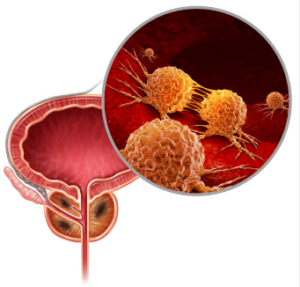Prostate Cancer Warning: Ignore This and You Could Regret It
 Prostate Cancer: The Silent Killer Lurking Within (Demystifying ICD-10 Codes)
Prostate Cancer: The Silent Killer Lurking Within (Demystifying ICD-10 Codes)
Men, are you over 40? If so, it’s time we had a serious talk about your prostate. Prostate cancer is a very real threat, and I want you to be armed with the knowledge you need to protect yourself. Today, we’re going to delve into the specifics – especially a type of prostate cancer known as adenocarcinoma.
What is Adenocarcinoma of the Prostate?
Let’s break it down. Adenocarcinoma is a type of cancer that starts in the cells of a gland. In this case, we’re talking about your prostate gland. It’s the most common type of prostate cancer, so if you’re concerned, it’s understandable.
Understanding the Basics
- Glandular Origins: Adenocarcinoma means the cancer originates in the cells that produce fluids within the prostate. These fluids are an important part of semen.
- Prevalence: Sadly, prostate cancer is extremely common, and adenocarcinoma is the most widespread type. Early detection is key!
- Don’t Panic: While a serious diagnosis, it’s important to remember that prostate cancer is often slow-growing, and many successful treatment options exist.
Symptoms to Watch For
- Changes in urination: Trouble starting a stream, frequent urination (especially at night), a weak flow, or feeling like you can’t fully empty your bladder.
- Blood: You might notice blood in your urine or your semen.
- Pain: Discomfort in your lower back, hips, or pelvis.
- Unexplained Erectile Dysfunction: Sometimes this could be an early sign.
Important Note: These symptoms can also indicate other, less serious conditions. Don’t self-diagnose, always consult your doctor for proper evaluation.
What Should I Do If I’m Worried?
- Talk to your doctor: Openly discuss your concerns and family history. They’ll help determine if tests are needed.
- Know your risk factors: Age (especially over 50), family history, and ethnicity all play a role in prostate cancer risk.
- Screening options: Prostate-specific antigen (PSA) blood tests and digital rectal exams (DRE) can aid in early detection. Discuss the pros and cons with your doctor.
ICD-10 Codes: The Secret Language of Prostate Cancer
You might hear phrases like “adenocarcinoma of the prostate ICD-10” or “C61 ICD-10”. Here’s the deal: ICD-10 is an international medical code system used to classify diseases. The code for adenocarcinoma of the prostate is C61. Doctors use these codes to track and understand cancer cases.
The History of Prostate Cancer ICD-10
Believe it or not, medical coding systems have evolved over time along with our understanding of diseases. The “history of prostate cancer ICD-10″ simply refers to how the code for this disease might have changed in past iterations of ICD codes.
Demystifying ICD-10 Codes
-
More Than Just a Code: ICD-10 codes do far more than just classify diseases. They help:
- Track Statistics: These codes give us a better picture of how common prostate cancer is, its trends, and its impacts across populations.
- Streamline Billing: Insurance companies use ICD-10 codes to understand diagnoses and make accurate reimbursements for treatments.
- Advance Research: Researchers use ICD-10 codes to study patterns, identify risk factors, and improve treatment options!
-
The “C61” Breakdown: Let’s dissect this code to understand it better:
- C: The “C” stands for “Malignant Neoplasms” (i.e., cancers.)
- 61: This number specifically designates the prostate gland as the site of the cancer.
The Bigger Picture: ICD-10 and Beyond
- A Global Language: ICD-10 is used internationally, making collaboration and data sharing between countries much easier.
- Regular Updates: As medical knowledge advancements happen, ICD-10 codes get updated to ensure accuracy.
- Future Coding: It’s possible even more specific codes for prostate cancer subtypes and stages will emerge with time.
Why ICD-10 Matters to You
- Accurate Records: These codes help ensure your medical records are detailed and precise.
- Advocacy: By tracking cases, organizations can advocate for better prostate cancer awareness, research funding, and support.
- Informed Decisions: Understanding codes empowers you to have more informed conversations with your doctor about your diagnosis or risk.
Malignant Neoplasm of Prostate: A Scary Phrase
Another term you might come across is “malignant neoplasm of prostate”. This sounds intimidating, but it just means a cancerous tumor in your prostate. Not all prostate growths are cancerous, but this phrase signals serious trouble.
Primary vs. Metastatic Adenocarcinoma of Prostate: What’s the Difference?
This gets crucial:
- Primary adenocarcinoma of the prostate ICD-10: This means the cancer started in your prostate and is likely still contained there.
- Metastatic adenocarcinoma of the prostate ICD-10: This means the cancer has spread beyond your prostate to other areas of your body. Sadly, this is a more dangerous stage.
 The Importance of Early Detection
The Importance of Early Detection
Catching prostate cancer early is absolutely critical. This is where it gets serious, guys. Regular checkups, knowing your family history, and being aware of potential symptoms could save your life.
What Does Prostate Cancer C61 Mean?
Remember the C61 code we talked about? It simply means “adenocarcinoma of the prostate” in the world of medical records and billing.
Prostate Cancer Screening: Ignorance Isn’t Bliss
Listen, the thought of a prostate exam might be awkward, but it’s a small price to pay for peace of mind. The “ICD-10 code for prostate cancer screening” simply indicates a medical procedure to check for cancer.
ICD-10 Codes for Metastatic Prostate Cancer
Unfortunately, if prostate cancer spreads, you’ll encounter more ICD-10 codes:
- ICD-10 code for metastatic prostate cancer unspecified – Used when the exact location of the spread is unclear.
- ICD-10 code for prostate cancer with metastasis – Simply indicates that the cancer has spread.
- ICD-10 prostate cancer metastatic to bone – Signals the cancer has reached the bones, a common complication.
When Prostate Cancer Spreads – exploring more codes:
- New Challenges: Metastatic prostate cancer, meaning the cancer has spread beyond the prostate gland, presents additional complexities in diagnosis and treatment.
- Tracking the Spread: ICD-10 codes become even more important to accurately depict the locations where cancer has spread and guide treatment decisions.
- Common Sites of Metastasis:
- Bones: The most frequent site of prostate cancer spread.
- Lymph Nodes: Cancer cells can travel through the lymphatic system.
- Lungs, Liver, and Other Organs: Though less common, prostate cancer can spread to these vital organs as well.
Specific ICD-10 Codes for Metastatic Prostate Cancer
- C79.51: Secondary malignant neoplasm of bone – Used specifically when prostate cancer spreads to the bones.
- C79.52: Secondary malignant neoplasm of bone marrow – Indicates spread to the bone marrow (soft tissue inside the bones).
- C79.2: Secondary malignant neoplasm of lymph nodes – Used for spread to lymph nodes.
- C79.31: Secondary malignant neoplasm of brain – If the cancer reaches the brain (a less common scenario).
- Other C79 Codes: ICD-10 has a whole range of codes for secondary cancers in other organs (liver, lungs, etc.).
Why Specificity Matters
- Targeted Treatment: Knowing the precise locations of metastases helps doctors tailor treatment plans. For example, bone-strengthening medications are important if bone metastasis occurs.
- Clinical Trials: Researchers often use ICD-10 codes to match patients with specific metastatic profiles to suitable clinical trials testing new treatments.
- Data Analysis: Detailed ICD-10 coding allows for a better understanding of metastatic prostate cancer patterns and helps improve care in the long run.
Important Note: Always consult your doctor for the interpretation of ICD-10 codes within the context of your individual diagnosis.
Don’t Let Prostate Cancer Take You By Surprise
Knowledge is empowerment, men. By understanding these terms and taking charge of your health, you’re giving yourself a fighting chance against prostate cancer.
chance against prostate cancer.
Why Knowledge is Power Against Prostate Cancer
- Early Detection is Key: Prostate cancer often develops slowly, with few initial symptoms. Understanding the warning signs means seeking medical help as soon as possible. Early diagnosis drastically improves treatment options and outcomes.
- Busting Myths and Misinformation: There’s a lot of confusing and contradictory information out there. Learning the facts helps you separate reliable information from harmful myths and make informed decisions.
- Advocating for Yourself: Understanding screening options, risk factors, and the latest in diagnosis and treatment gives you the vocabulary to have productive conversations with your doctor and become an active partner in your own care.
- Destigmatizing the Conversation: Many men struggle to talk about prostate health. Being proactive about learning can help normalize the discussion and encourage others to do the same.
How to Take Charge
- Discuss with Your Doctor: Talk about your individual risk factors and if/when screenings like PSA tests and DREs are appropriate for you.
- Stay Updated: Credible medical websites offer reliable information on new therapies and research in prostate cancer (https://www.pcf.org/), American Cancer Society (https://www.cancer.org/)] )
- Healthy Lifestyle Habits Matter: While not foolproof, a healthy diet, exercise, and managing weight can lower your overall cancer risk.
Fighting Chance
The term isn’t just about survival. It’s about:
- Quality of Life: Early detection and access to advanced therapies often lead to better treatment outcomes and fewer long-term side effects.
- Mental Well-being: Knowledge lessens anxiety, giving you a sense of control amidst a potentially scary diagnosis.
I urge you: If you’re over 40, make an appointment with your doctor to discuss prostate cancer screening. It could be the most important decision of your life.
Prostate Cancer FAQs: Get Informed, Get Empowered
 1. Why is it important to know about prostate cancer even if I don’t have symptoms?
1. Why is it important to know about prostate cancer even if I don’t have symptoms?
- Prostate cancer often develops slowly and might not show signs in its early stages. Understanding the subtle warning signals allows for early diagnosis, which dramatically improves the chances of successful treatment.
2. Where can I find reliable information about prostate cancer?
- Reputable sources include:
- Your doctor (always the primary source)
- Prostate Cancer Foundation (https://www.pcf.org/)
- American Cancer Society (https://www.cancer.org/)
- Government health websites
3. I’m afraid to talk to my doctor about prostate cancer. How do I start the conversation?
- It’s completely normal to feel nervous. Here are some tips:
- Be direct: “I’d like to discuss prostate cancer screening.”
- Share your concerns: “I have a family history…/ I’ve heard about…”
- Bring a list of questions.
4. Can lifestyle changes actually help lower my prostate cancer risk?
- While there’s no guarantee, healthy habits make a difference:
- Focus on fruits, vegetables, and whole grains.
- Limit red and processed meats.
- Maintain a healthy weight.
- Exercise regularly.
5. What does “fighting chance” really mean in terms of prostate cancer?
- It’s about more than just survival. A fighting chance means:
- The best possible chance at successful treatment and recovery.
- Minimizing long-term side effects and preserving quality of life.
- Feeling empowered and in control during your health journey.
Disclaimer:
The information provided in this article is intended for general knowledge and informational purposes only, and does not constitute medical advice. It is essential to consult a qualified healthcare professional for diagnosis and treatment of any health condition. Never disregard professional medical advice or delay in seeking it because of something you have read in this article.

